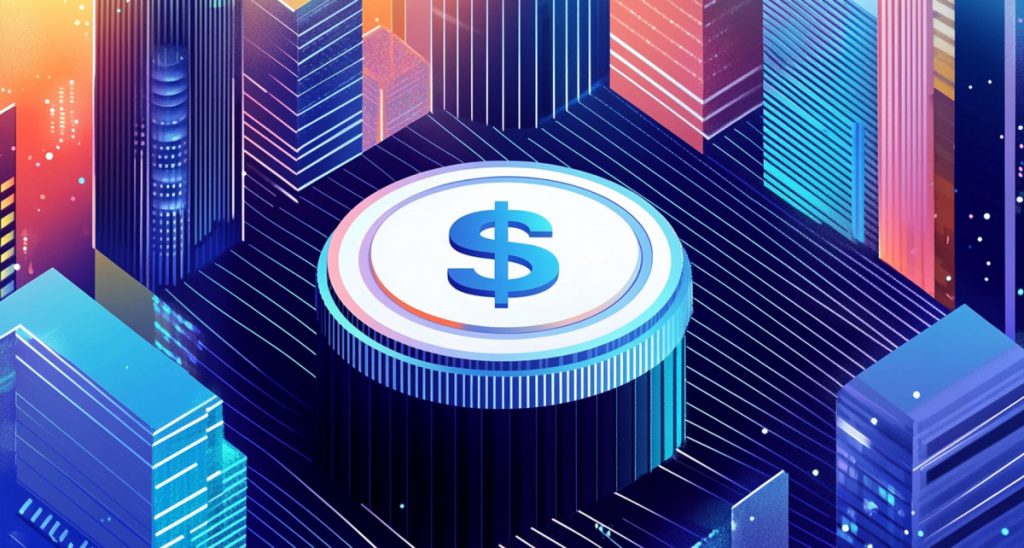Ripple’s $5B Circle Bid Rejected: Inside The Stablecoin Power Struggle


In Brief
Ripple Labs offered $4–5 billion to acquire Circle, but USDC issuer declined, citing a higher valuation and a preference to grow independently despite Ripple’s efforts to expand its stablecoin presence.

Bloomberg reported that Ripple Labs — the company behind XRP and its cross-border payments network — tried to acquire Circle Internet Financial, the issuer of the stablecoin USDC. The offer was said to be in the range of $4 billion to $5 billion, but Circle reportedly turned it down.
This news quickly spread across crypto media and platforms. Many started asking why Ripple would make such a move, and what it says about the company’s next steps in the growing stablecoin space.
According to sources, the offer was based on market predictions before Circle’s expected IPO. But even with that valuation, Circle refused to accept the deal. Reports say that Circle’s leadership believed the offer was too low. They also thought that selling the company now would not match their long-term plans.
This isn’t the first time Circle has looked at going public. Back in 2022, it prepared a listing through a SPAC deal valued at $9 billion, but that agreement fell through. In April 2025, the company filed new documents with the SEC to begin an IPO process on the New York Stock Exchange, working with large investment banks like JPMorgan, Citi, and Deutsche Bank.
Just weeks later, though, Circle decided to pause the IPO. According to WSJ, the reason was rising tension in financial markets, especially due to the U.S. trade war. Still, Circle remained focused on building its business independently — and stayed profitable.
Ripple’s Move: Smart Strategy or Sign of Struggle?
Ripple’s attempt to buy Circle may be more than just a bold business move. Some believe it’s tied to the company’s own efforts to grow in the stablecoin space, where Ripple recently launched RLUSD, a dollar-backed stablecoin.
Ripple introduced RLUSD in December 2024. The coin runs on Ripple’s XRP Ledger and the Ethereum network. But despite early excitement, the coin is still small in size. Its market cap is now around $317 million, according to CoinMarketCap. By comparison, USDC is valued at more than $61 billion, and USDT leads with over $150 billion.
That gap makes Ripple’s position more difficult. Some experts, like lawyer Bill Morgan, believe Ripple expected faster adoption of RLUSD. He said that the stablecoin wasn’t growing fast enough to match the company’s goals. In his words: “Perhaps RLUSD was part of a strategy to acquire Circle.”
Others shared similar views online. Some described Ripple’s offer as a major attempt to gain influence, not just buy another company. One crypto commentator called the move “a missile,” saying this wasn’t just about payments anymore — it was about controlling digital money itself.
In 2025, Ripple announced several acquisitions aimed at expanding its operations. In April 2025, it also announced plans to buy the brokerage platform Hidden Road for $1.25 billion. This would help Ripple enter traditional markets and offer better access to liquidity. The company already owns Metaco, which works on CBDC projects and builds tools for payments between banks and governments.
If Ripple had managed to buy Circle, it would have instantly gained access to USDC, its legal and regulated framework, and the broad list of companies that already support it — like Coinbase, Visa, and many others.
However, shortly after Bloomberg’s story broke, a rumor spread online that Ripple had raised its offer to $6 billion. Tweets claimed that Ripple CTO David Schwartz confirmed this number. But the screenshots turned out to be fake. No public evidence supports a higher bid, and Ripple did not release a statement confirming or denying it.
Circle’s Refusal: Strong Numbers and Independence
Circle’s reason for rejecting the offer may be simple — the company is doing well on its own. Based on its Form S-1 filing with the SEC, Circle earned $1.68 billion in revenue in 2024. Almost all of that — around 99% — came from interest made on U.S. Treasury bonds and REPO agreements.
Even though revenue was slightly lower than the year before, Circle remained profitable. For the second year in a row, it reported positive net income. Its cash flow from operations reached $344.6 million, and its available assets at the end of the year totaled $45.8 billion.
This solid financial position makes Circle an unlikely candidate for acquisition — at least under current market conditions.
The company is also growing on several fronts. It’s working on more licenses in other countries, expanding products like USYC and EURC, and building deeper connections with partners such as MoneyGram, Binance, and Coinbase.
Circle CEO Jeremy Allaire regularly updates the community on product progress. In April 2025, he posted that €201.6 million in EURC had been issued. This marked a 49% increase in a single month. The coin is already used in cross-chain payments and gaining support from new apps.
From this angle, it’s easy to see why Circle said no. The company sees more value in growing on its own, rather than becoming part of another project — even one as big as Ripple.
What This Means for the Market
The possible Ripple–Circle deal tells us a lot about where stablecoins are headed. These digital tokens are no longer just crypto tools. They are becoming key parts of global payments, finance apps, and even central bank experiments.
Buying Circle would have given Ripple control over USDC, which is already used by governments, businesses, and DeFi platforms. It’s not just a coin — it’s a piece of modern infrastructure. Getting access to that would help Ripple offer more services, faster settlement, and more direct ways to connect with traditional finance.
But merging two large companies takes time. It also brings a lot of challenges — especially when the deal is worth several billion dollars. Mergers need to pass strict rules in the U.S. and Europe, especially when they affect banks, money movement, or stablecoins.
Right now, neither Ripple nor Circle has commented further. No updates have confirmed if talks are still ongoing or completely closed.
Ripple, Circle, and the Road Ahead for Stablecoins
Ripple’s possible attempt to buy Circle shows that stablecoins are now a top priority for large crypto companies. With RLUSD still growing slowly, Ripple may be looking for faster ways to compete.
But Circle, with its strong profits, trusted brand, and growing product line, is not in a rush to sell. Instead, it continues to build and expand.
This story may not be over. Ripple could return with another offer. Or it may focus on growing RLUSD from the ground up. Either way, the race for stablecoin dominance is far from settled — and it’s becoming one of the most important battles in the crypto industry.
Disclaimer
In line with the Trust Project guidelines, please note that the information provided on this page is not intended to be and should not be interpreted as legal, tax, investment, financial, or any other form of advice. It is important to only invest what you can afford to lose and to seek independent financial advice if you have any doubts. For further information, we suggest referring to the terms and conditions as well as the help and support pages provided by the issuer or advertiser. MetaversePost is committed to accurate, unbiased reporting, but market conditions are subject to change without notice.
About The Author
Alisa, a dedicated journalist at the MPost, specializes in cryptocurrency, zero-knowledge proofs, investments, and the expansive realm of Web3. With a keen eye for emerging trends and technologies, she delivers comprehensive coverage to inform and engage readers in the ever-evolving landscape of digital finance.
More articles

Alisa, a dedicated journalist at the MPost, specializes in cryptocurrency, zero-knowledge proofs, investments, and the expansive realm of Web3. With a keen eye for emerging trends and technologies, she delivers comprehensive coverage to inform and engage readers in the ever-evolving landscape of digital finance.


















































